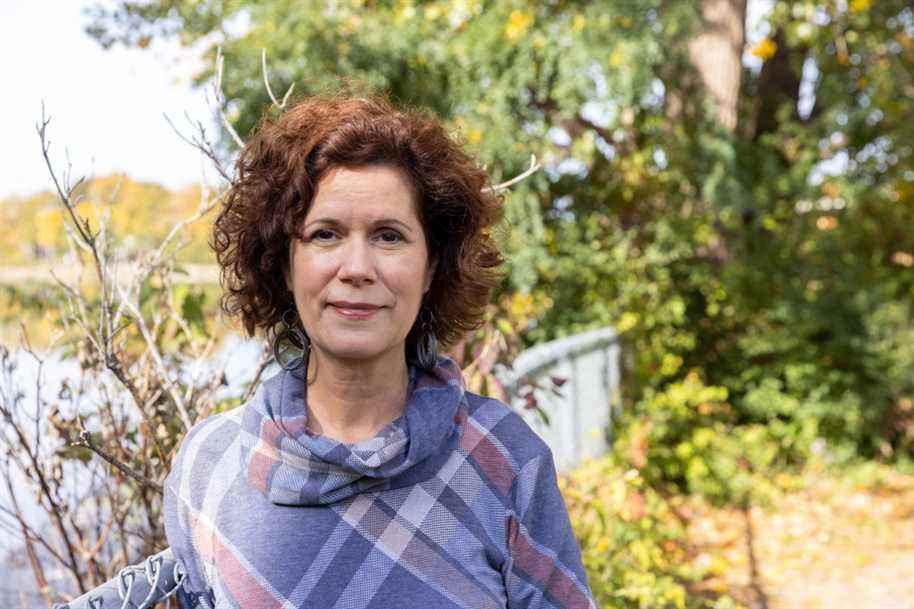Catherine Perrin publishes a third book and a second novel, Age of accidents, which shows that, despite disagreements, fractures and tragedies, the strength of human bonds allows us to reconnect with hope.
After paying homage to his mother in a story (A discreet woman, Quebec America) and his father in a novel (Three awakenings, XYZ), Catherine Perrin continues her work inspired by parentage in Age of accidents. Without the book being explicitly dedicated to his children, his vision is based on the vital importance of relationships with loved ones beyond the crevasses bypassed along the way.
“There is a lot of talk about the links that are strong in the novel,” she explains. People support each other. All the accidents in life are repaired and relationships ensure that we get through them. We often talk about dysfunctional links, but I did the opposite, the novel talks about functional links subject to accidents. ”
The host-musician-author, to whom the passion for fiction came after the publication of her first novel, follows here the trail of a science journalist, Patricia, whose daughter, Jasmine, was one of the witnesses powerless from the crash of a viaduct causing death. Herself the victim of an accident which will fracture her leg, Patricia will try to help Jasmine. Mother and daughter will rebuild themselves little by little, despite various obstacles, errors of judgment and illusory loves.
Even if there is a couple adrift, we feel that there is a fundamental respect between these two people. Between the daughter and the mother, even if there are differences, there remains a great bond of trust. Being attentive to these links in life is my way of still believing in humanity.
Catherine Perrin
Her work in radio animation, subject to ethics and journalistic standards, has helped her put herself in the shoes of the character of Patricia. She nevertheless wondered whether it is relevant to preserve journalistic neutrality in the face of deeply shocking events.
A certain viaduct
The book begins with the collapse of a viaduct. Even if it is not that of the Concorde, Catherine Perrin read the investigation report into the Laval tragedy in 2006.
“I even consulted an engineer because I like to say as little as possible and make sure that what is implied in the book does not make us take the field. Regarding the Innu, who are important in the story, I nevertheless traveled 800 km in order to get to Uapishka last summer and take root in something that I had perceived, without betraying reality. ”
The style of the novelist is based on a host of significant details as much in the descriptions as about the emotions of the characters. This is the work of a writer sensitive to the slightest thrills of the soul.
“I like to read psychological details that put my finger on super-thin things with a lot of impact. For that kind of story, I couldn’t get out of it. “
I never tire of micro-scales. My threshold of excitability is quite low. I don’t need a lot of things to animate me. For me, there are always huge things happening on a human level.
Catherine Perrin
Sa Patricia is a mother who cares about all the changes affecting her children. This lifelong job leads the journalist to flirt with her daughter’s idealistic journey. From accidents to reconstruction, his happiness depends on that of those around him.
“The emotional starting point was a serious and very interesting, non-criminal, event involving someone I know whom, say, my fellow journalists would like to meet. I decided to preserve this link without revealing anything. But then I started to extrapolate, imagining that it could have happened to one of my children. ”
Year 2035
The second part of the book takes place in 2035, after the novelist has touched on the subject of the pandemic. However, it is the eco-anxiety that pushes the characters to activate themselves, to change their life or attitude, at the very least.
I had the reflex to avoid the present because it is built. We don’t have the necessary perspective to talk about the pandemic, I believe. What I evoke and which happens in 2020 in the novel is already no longer relevant, by the way.
Catherine Perrin
In Age of accidents, the future belongs to young people who decide to revive the northern town of Gagnon from its ashes under the name of Nikaniteu – “he leads the way” in Innu – and make it a place of all reconciliations.
As Catherine Perrin underlines, the character of Jasmine will also say to Patricia: “It’s not a utopia, mom, we’re going to do it for real. ”

Age of accidents
Catherine Perrin
XYZ – Romanichels
214 pages
